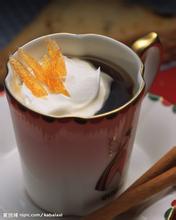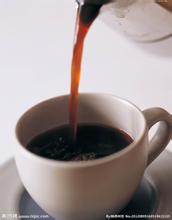Ice drop coffee distinguishes coffee beans-country of origin and name
Brazil
Coffee beans
Atlas of coffee beans in Brazil
Brazil is the most important coffee producing area in the world, accounting for 1x3 of the total output in the world. Brazil has 10 states producing coffee beans. Due to differences in region and climate, the quality of Brazilian coffee beans is inevitably intermingled. Therefore, Brazilian coffee beans are divided into No.1-No.3,Screen 18 and screen 19 according to the grade, so that the quality is neat and stable, and the processing and roasting can also have a better effect. Brazilian coffee is medium-fragrant, sour and mellow, has a mild bitter taste and is famous for its smooth taste. Among all kinds of Brazilian coffee varieties, Santos Coffee is more famous. Santos Coffee can also be called Bourbon Santos. Bourbon Santos is of good quality and has a round taste with moderate acidity and strong sweetness. Bourbon Santos is considered to be an indispensable ingredient for mixed coffee.
Blue Mountain
Blue Mountain Coffee is produced in the Blue Mountains of western Jamaica, hence its name. Blue Mountain is a mountain range with an elevation of 2256 meters. Coffee trees are planted on a steep hillside about 1000 meters above sea level. The annual output of Blue Mountain Coffee is only about 700 tons. Blue Mountain coffee beans are full in shape and slightly bigger than ordinary beans. Sour, fragrant, mellow, sweet taste is uniform and strong, slightly bitter taste, harmonious taste, excellent flavor, suitable for individual coffee. Due to the low output, most of the products sold on the market are "special blue mountains", that is, mixed coffee with other coffee beans at the bottom of the blue mountains.
Colombia
Colombia is the second largest coffee producer in the world, accounting for 12% of the world's total output, second only to Brazil and the largest producer of Colombian Mild. Colombian coffee trees are planted in the highlands and have a small cultivated area in order to take care of harvesting. The harvested coffee beans are refined with water washing (wet method). Colombian coffee beans are of neat quality and can be called the standard beans among coffee beans. Colombian coffee beans are large in shape, light green, with a special thick flavor, and are widely favored for their rich and unique aroma. The taste is sweet in the acid and low in bitterness, which can lead to multi-level flavor with the different degree of baking. Medium baking gives full play to the sweetness of beans, with mellow acidity and bitterness; deep baking increases bitterness, but the sweetness still doesn't disappear much. Generally speaking, medium-deep roasting will make the taste more personalized, not only as a single drink, but also suitable for mixed coffee.
Manning
Indonesia is a big coffee producer. Coffee is mainly produced in Java, Sumatra and Sulawi, with ROBUSTA species accounting for 90% of the total production. Manning is one of the few Arbica species. The granule of Mantenin is large, the bean quality is very hard, and the rate of defects in the planting process is on the high side, which is usually selected manually after harvest. If the control process is not strict enough, it is easy to cause a mixture of good and bad quality, and different baking degrees also directly affect the taste. Therefore, it has become a more controversial single product. Before Blue Mountain was discovered, Manning was regarded as the best coffee because of its rich and mellow taste, not astringent but not sour, mellow and bitter; moderate roasting will leave a moderate sour taste and unique flavor; if the roasting is too shallow, it will be powdery and astringent.
Kona.
Hawaiian coffee beans are grown on volcanic terrain. At the same time, there is a high density of artificial farming, so each bean can be said to be spoiled, the price is naturally expensive, second only to the Blue Mountains. Hawaiian Kona beans are evenly shaped and have a strong sour and sweet taste. The palate is moist and smooth. Moderate baking makes beans sour, while deep baking aggravates both bitterness and mellow taste. This coffee bean grows from sea level to 6000 feet. Gourmet coffee generally grows only in mountain areas, growing at a height of about 4000 to 6000 feet requires annual rainfall of about 80 feet and is obvious in dry and wet seasons. The soil for growing gourmet coffee beans should be very fertile and usually have volcanic rock, and light cloudy or cloudy weather is also necessary in the growing environment of high-quality coffee beans. The daytime temperature needs 15-20 °C. This climate results in a longer growth process, a unique growth and climatic environment that leads to a stronger coffee flavor.

Important Notice :
前街咖啡 FrontStreet Coffee has moved to new addredd:
FrontStreet Coffee Address: 315,Donghua East Road,GuangZhou
Tel:020 38364473
- Prev

Morphological characteristics and planting environment of small-grain coffee
Morphological characteristics edit small trees or large shrubs, 5-8 m tall, base usually much branched; old branches gray, small-grained coffee (6) nodes inflated, young branches glabrous, compressed. Leaves thinly leathery, ovate-lanceolate or lanceolate, 6-14 cm long and 3.5-5 cm wide, tip long acuminate, acuminate part 10-15 mm long, base cuneate or slightly obtuse, rarely rounded, entire or present
- Next

The History or Origin of Blue Mountain Coffee what are the three types of coffee
At present, there are three kinds of coffee: Arabica, Robusta and Liberika. Arabica species: of Elaraby Sinia (now Ethiopia), with the highest quality of the three largest tree species, accounting for 2/3 of the world's coffee production. Coffee beans are oval and flat, cultivated in the highlands. It has strong fragrance and good quality; Robusta species: from Africa, Congo, resistant to disease
Related
- Does Rose Summer choose Blue, Green or Red? Detailed explanation of Rose Summer Coffee plots and Classification in Panamanian Jade Manor
- What is the difference between the origin, producing area, processing plant, cooperative and manor of coffee beans?
- How fine does the espresso powder fit? how to grind the espresso?
- Sca coffee roasting degree color card coffee roasting degree 8 roasting color values what do you mean?
- The practice of lattes: how to make lattes at home
- Introduction to Indonesian Fine Coffee beans-- Java Coffee producing area of Indonesian Arabica Coffee
- How much will the flavor of light and medium roasted rose summer be expressed? What baking level is rose summer suitable for?
- Introduction to the characteristics of washing, sun-drying or wet-planing coffee commonly used in Mantenin, Indonesia
- Price characteristics of Arabica Coffee Bean Starbucks introduction to Manning Coffee Bean Taste producing area Variety Manor
- What is the authentic Yega flavor? What are the flavor characteristics of the really excellent Yejasuffi coffee beans?

